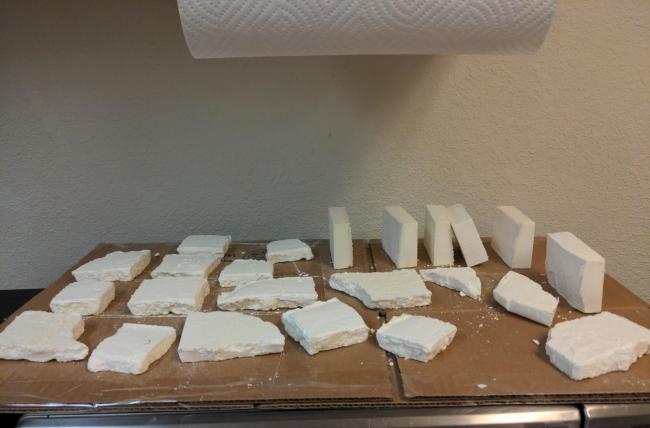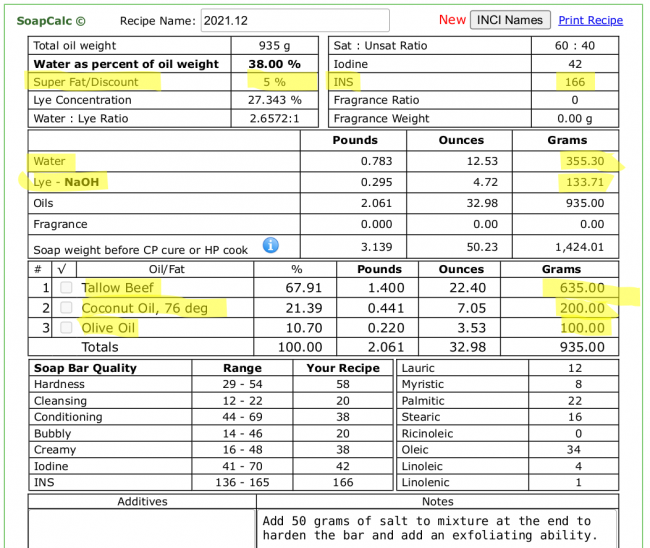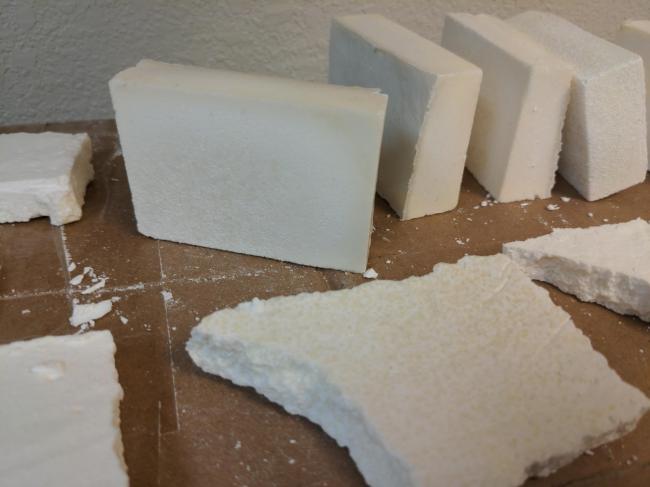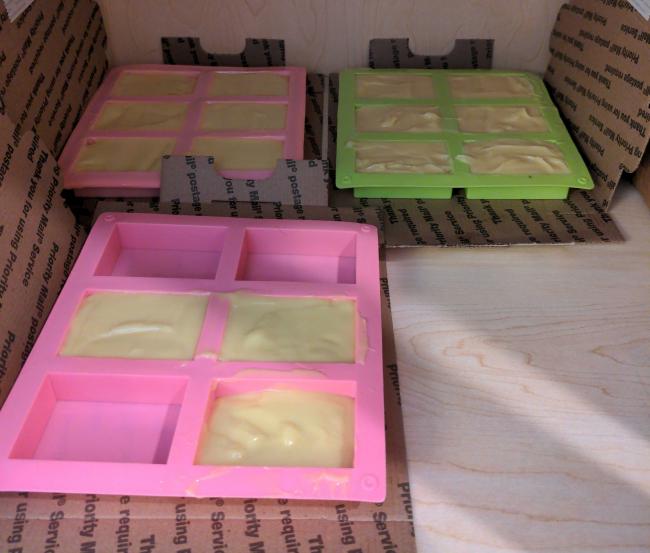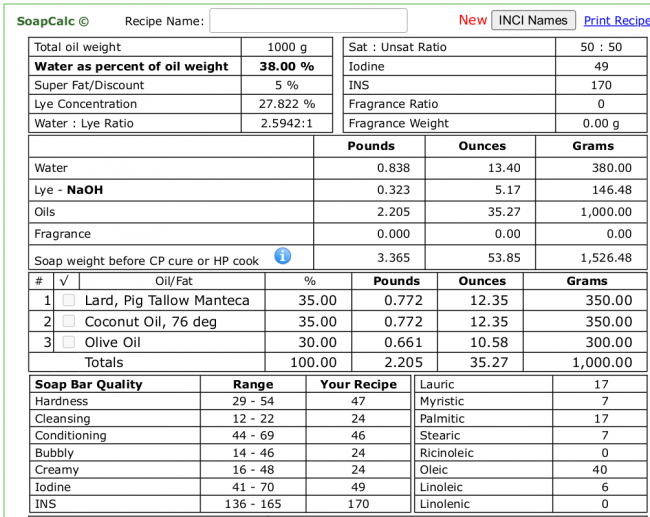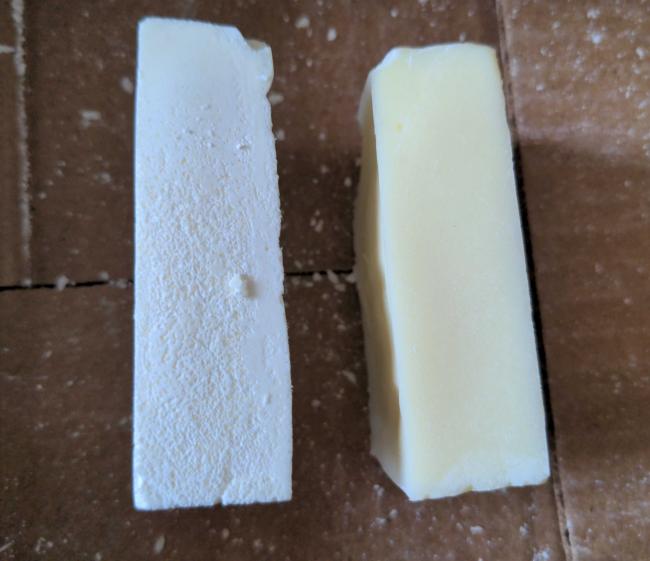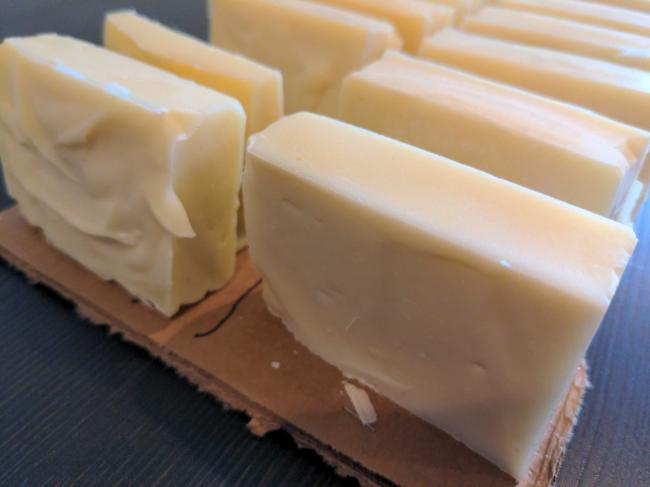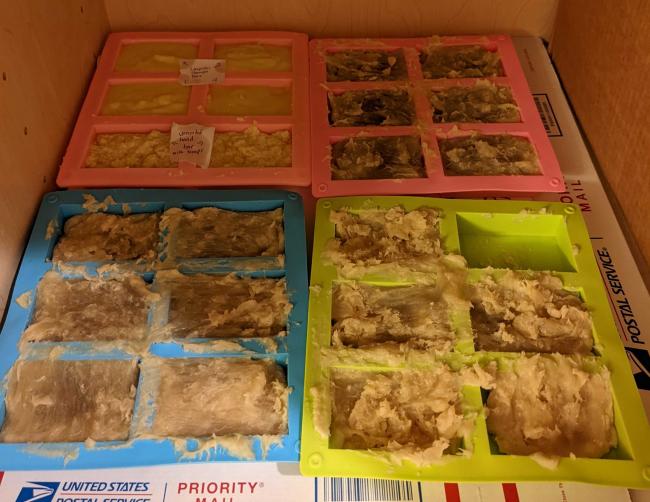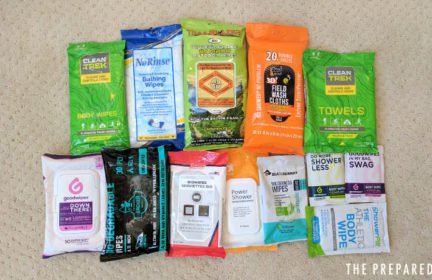Success! I finally made a batch of soap that I liked
After some great advice from the wonderful people here on the forum my second attempt at making soap turned out MUCH better than the first time. Check out the comments on this forum thread to see my first failed attempt.
For those who are interested in making soap, I’ll give a brief summary of how to do it.
Shopping list:
- Pure sodium hydroxide (lye). I bought 2lb for $16 on Amazon and it came with a free silicone mold. I’d link to the item I bought but it doesn’t seem to be available any longer.
- Silicone molds. These make the process much nicer and produce a better bar than homemade cardboard molds, so it is definitely worth investing in these.
- Two small 3-4 gallon buckets
- Silicone spatula
- Soap blender
- Disposable paper cup
- Kitchen scale to measure ingredients
- Fat sources. Coconut oil, beef tallow, olive oil, and many other options. Check out the possibilities on soapcalc.net to see what they can help you use. Avoid polyunsaturated fats, I learned this the hard way in my first attempt, which is linked up above.
- Distilled water
- Eye protection and disposable gloves
A quick and dirty summary of how soap is made is that you take some fat source like olive oil, mix with lye and water, and chemical reactions happen that turn it into soap.
To calculate what recipe you are going to use, go onto soapcalc.net and plug in your various fat sources and how much you have. For this successful attempt I used about 2/3 beef tallow and 1/3 coconut and olive oil. The users on this forum taught me which parameters I should shoot for. I went with an INS of 160, higher than this gives you a harsher soap and having some superfat to offset possibly being off on your recipe and avoiding excess lye that will burn you. Tweak your fat levels until you reach the goals you are going for. Here is my recipe. I don’t know what all this means but I’ve highlighted the things I look at.
According to your recipe, measure out your ingredients. Use a disposable cup for the lye, but the other food grade materials (water and the fats) can be measured into your normal kitchen’s bowls because they won’t touch anything toxic.
Take one of the 4 gallon buckets outside and put on eye protection, gloves, and a long sleeve shirt. Pour in the water first and then the lye and stir with the spatula. It will give off some nasty fumes and heat up pretty hot from the chemical reaction.
Back inside you will heat up your fats to as close to the same temperature as the lye mixture. I just threw it all in the crock pot and melted down the solid beef tallow and coconut oil. If you are doing just oils like coconut oil and olive oil then just heat them up in the microwave.
Combine the lye and oil mixture in your second bucket and mix for 2-3 minutes with the electric mixer until it is very creamy and thickens up a bit.
Pour the liquid soap into the molds and use the spatula to clean out the last drop. Put the molds in a cool dark cupboard and cover with a cloth for it to harden. I gave it a couple days and then pulled the soap bars out of the molds and stood them up on a piece of cardboard to get more airflow. Let them sit for a month to cure and they are ready to use.
The nice bars in the back of this picture were from the mold, and the weird pieces were ones that I broke up from a large chunk in a cardboard mold that I made. I won’t use a homemade mold again and will get more silicone molds because they make it so much nicer.
My soap bars smelt very strongly like beef broth when they were just poured into the molds. By the time a month had passed and they were ready to use they still smelt slightly beefy if you put your nose up to them. When you lather your hands a smell of beef broth can be smelt but your hands don’t smell like anything after you rinse them off. It’s an interesting smell that I don’t particularly like, but my wife has showered with it and said she didn’t smell anything. Maybe I am just more sensitive to it. Next time I make soap, I have some pig lard that I need to use. It probably won’t smell as strongly as the beef tallow, but I still am going to only put in 25% lard because I am not a fan of the meat smelling soap. I also do not want to add essential oils because I don’t want to smell peppermint beef either.
Well, that’s about it. I am extremely new to this world of soap making and if I said something incorrect please correct me. I don’t know how everything works, I just know that if you do steps A+B you get C and that’s what I want. It’s a fun experiment and I feel a sense of self sufficiency. If there was a nationwide run on soap for whatever reason I could make my own and share with others. Soap and cleanliness is very important for health and moral so it is an important survival and prepping skill to know how to make. At first I was scared and worried I wouldn’t get the chemistry right, and I actually didn’t the first time, but once I knew what to shoot for it was very easy to do. It is not a hard skill to learn and there are so many things and variations you can run with from here. I just like plain, simple, cheap survival soap though. Maybe one day I’ll expand into scents, colors and shapes.
-
Comments (24)
-
